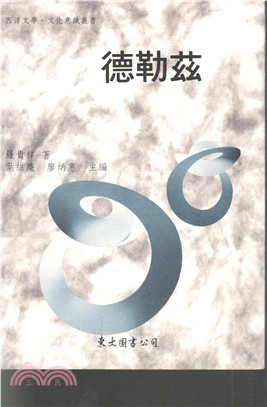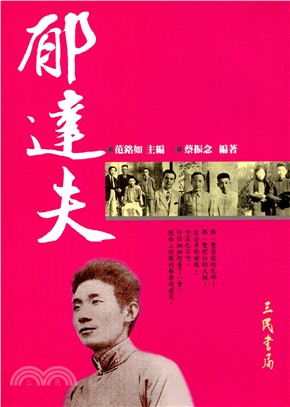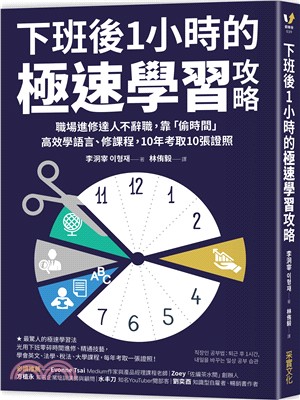European Dream and Reluctant Integration in the 21st Century:Lessons for Ongoing Asian Regionalism
- 系列名:臺灣歐洲聯盟研究叢書
- ISBN13:9789863504146
- 出版社:臺大出版中心
- 作者:Hungdah Su (蘇宏達)
- 裝訂/頁數:精裝/512頁
- 規格:21cm*15cm*3.4cm (高/寬/厚)
- 出版日:2020/11/24
商品簡介
To avoid a repeat of those nationalist nightmares, a common European Dream emerged after WWII, which has since developed into some essential doctrines of European integration. This dream-inspired institutionalist context has framed intergovernmental bargaining, sectoral spillovers and transnational cooperation in European integration. The powerful European Dream has even encouraged Europeans toward closer integration, though they were, quite often, very reluctant to go further. This dream-driven approach and reluctant runner’s model have highlighted some fundamental realities of European integration, extremely inspiring for the future of the EU and the ongoing Asian regionalism.
This book consists of three parts and thirteen chapters. It aims to explain European integration, the EU’s role in global governance and the EU’s impact upon Asian regionalism with the help of the European Dream approach and reluctant runners’ model. Trump’s unilateralism, the rising tensions between the US and PRC and the COVID-19 pandemic may be a turning point for world politics. Both globalization and global governance have consequently slowed down, giving place to regionalism and inter-regionalism. This book hopes to contribute to the rising debate over European integration, Asian regionalism and EU-Asian inter-regionalism.
作者簡介
Professor and Jean Monnet Chair of the Department of Political Science at National Taiwan University, Director-General of the European Union Centre in Taiwan, and President of European Community Studies Association Taiwan (ECSA Taiwan). He served as President of the European Union Studies Association Asia-Pacific during 2017-2018. He is Member of the European Academy of Sciences and Arts since 2015.
序
序言
Preface and Acknowledgement
I started to study European integration in the late 1980s when I was utterly fascinated by the fast-developing Single European Act (SEA). Since then, I have witnessed the ups and downs of European integration. One decade later, Asian countries decided to begin their regional integration after having experienced destructive financial crises as well as shameful bailouts imposed by the International Monetary Fund (IMF) and the US. I, then, started to focus upon Asian regionalism too, often taking references from the European Union experiences. After having studied these two themes for decades, I present, in this book, two innovative concepts−European Dream and reluctant integration. With the help of these two concepts, I try to explain the development of the EU and its evolving roles in global governance and evaluate the competing approaches to Asian regionalism.
In writing this book, I have benefited from the contributions and support of many people and institutions. I am particularly grateful to four anonymous reviewers for their comments, to Miss Blake Chang, Miss Lynn Chang and Mr. Liam Gibson for their English proofreading, for Novio Liu, Marc Cheng, and Heather Pai for their coordination, for Miss Hsieh and Miss Yen for their editing, for the editorial board for their endorsement and for the National Taiwan University Press (NTU Press) for its firm support.
Finally, I owe a debt of gratitude I can never repay to my family and my mentors in Asia, Europe, and America. I thank them all.
目次
Preface and Acknowledgement
List of Tables
List of Figures
List of Abbreviations
Introduction: European Dream, Reluctant Integration and Its External Impact
Part One: How to Advance Reluctant Integration
Chapter 1 Manage Widening to Achieve Deepening
Chapter 2 Transform Multi-Speed Integration into Comprehensive Integration
Chapter 3 Seize ‘Good’ Crises for Further European Integration
Chapter 4 Mobilize the Transnational Elite Cooperation
Part Two: The EU in the Global Governance
Chapter 5 How Can the EU Improve Global Governance in a Dilemma?
Chapter 6 How Can the EU Restructure Trans-Atlantic Cooperation?
Chapter 7 How Can the EU Promote the Trans-Atlantic FTA among Europeans?
Chapter 8 How Should the EU Respond to Asian Countries’European Strategies?
Part Three: The EU and Asian Integration
Chapter 9 EU’s Founding Father and China
Chapter 10 EU Studies in Asia
Chapter 11 The EU Public Diplomacy in Asia
Chapter 12 The EU’s Image in Asia after Brexit
Chapter 13 Will Asian Regionalism Develop into a Union?
Conclusion: European Dream, the EU’s Future and Its Lessons for Ongoing Asian Regionalism
References
Index
書摘/試閱
Introduction: European Dream, Reluctant Integration and Its External impact
A majority of European leaders had dreams in world politics; however, they were often in competition and, even worse, in conflict. From Louis XIV to Napoleon, the French dreamed of dominating the whole of Europe with their once most robust army and subtle diplomacy. Following their realpolitik, the Germans tried to implement their European designs by launching two world wars. The Spanish and Portuguese once dreamed of dividing the world into two parts by themselves while the Austrians and Hungarians worked together to maintain their multi-ethnic duo empire. Furthermore, the British Empire even once seemed to be eternal. All of these dreams led the Europeans into ever bloodier wars in the 20th century, ending with destruction and disasters.
It was not until these European dreams turned into a collective nightmare in the World War II (WWII) did the Europeans start to dream about a shared future. It is under such circumstances that the ‘European Dream’ emerged as a powerful engine launching, supporting and guiding the European integration in the aftermath of WWII. This European Dream aims to constitute eternal peace in Europe based upon reconciliation through integration. It has developed into some fundamental doctrines structuring European integration.
First, European integration is a political movement pursuing Pax Europa because a “united Europe was not achieved, and we had war.” Second, this integration must start with the “elimination of the age-old opposition of France and Germany.” Any action taken must, in the first place, concern these two countries. Third, this bilateral reconciliation must proceed within the framework of an organization “open to the participation of the other countries of Europe.” Last but not least, European peace cannot be achieved through intergovernmental cooperation only. “Peace cannot be safeguarded without the making of creative efforts proportionate to the dangers which threaten it (Schuman, 1950).” Therefore, European integration is indispensable to the making of peace in Europe.
These doctrines have contributed to the fruitful European integration over the past seventy years. However, they may have suffered some endogenous shortcomings because this transnational integration emerged as an immediate response and in opposition to nature-born nationalism, leading to presentation of three propositions in this book.
Proposition one: Economic integration does not always contribute to political integration.
Europeans have to implement this gigantic political project with the help of non-political tools. For example, a majority of economic decisions in the EU were adopted with political ambitions often against market rules, leading to socio-economic disturbances in Member States. Accordingly, popular support of these economic decisions and people’s acceptance of these internal disturbances heavily depends upon their identity with this European Dream. When this identity weakens, hostility against European integration rises. Economic integration does not automatically lead to further political integration.
Proposition two: Europeans prefer to maintain status quo until they are forced to advance integration.
Contrary to our general understanding, Europeans are very reluctant to advance any integration. They promote it only when their inaction or setback begins damaging the already achieved integration, an implicit threat to European peace.
Proposition three: The EU’s external action is rather the extension of its achieved internal integration than its strategic choice.
This European Dream gave birth to an inward rather than an outward integration movement. As a result, these doctrines failed to supply the EU’s external actions with strong ideological support. In other words, European integration only aims to achieve peace among European countries, and not between European countries and the outside world. It is the achieved internal integration that has obliged the EU to adopt external actions in the same sector.
Based on this dream-driven approach and reluctant runners’ model, this book aims to re-interpret European integration and its impact on world politics. This study may constitute essential lessons for an understanding of the future of European integration and ongoing Asian regionalism.
This book consists of three parts. Part One aims to illustrate how the European Dream has guided and shaped European integration, though often contrary to Europeans’ will. According to this dream-driven approach, Europeans are obliged to work together to deepen integration to avoid the worst. Integration fruits are usually at risk when enlargements are coming, crises have appeared, or sub-integration becomes threatening, all of which can, however, be managed to advance European integration beyond original expectations.
Chapter One analyzes the eastward enlargement and its correlation with the constitution-making efforts since 2001. This analysis bases its explanation on the European Dream approach and reluctant runners’ model, which immediately falsifies economic or geopolitical reasons. In terms of commercial interests or geopolitical concerns, eastward enlargement was never the optimal choice of the EU. It should have granted permanent neighborhood status to all applicant states in Central and Eastern Europe. These eastern neighbors would then become a buffer zone between the EU and Russia-controlled ex-USSR (Union of Soviet Socialist Republics) as well as between the EU and the then still troubling Balkans. They would be forced to follow the rules of the EU without participating in its policy-making. It was under increasing pressure of the norms “WE ARE EUROPEANS” that the EU was forced to give the green light to eastward enlargement. This expansion represented a severe threat to the achieved integration soon. With the Franco-German initiative, the EU was resolved to restructure and consolidate its institutions as its preparation for coming enlargements. Widening of the EU, therefore, stimulated its deepening in the context of the European Dream.
Unlike widening, multi-speed integration puts pressure on the EU from inside. Chapter Two, therefore, deals with sub-integration, one form of multi-speed integration, that entered into the agendas of the EU and Asia-Pacific Economic Cooperation (APEC) in the early 1990s. The categorization of multi-speed integration, whose style might be decisive to its future contribution or damage to comprehensive integration, is detailed in this chapter. In comparing enhanced cooperation of the EU and the pathfinder initiative of the APEC, this chapter develops some general rules correlating sub-integration with comprehensive integration. Only in pursuit of the same goals as comprehensive integration and being absorbed into its institutional frame could such multi-speed integration contribute to extensive integration itself. On the contrary, any multi-speed integration pursuing very similar goals but outside of the institutions of the EU could divide the integration and encounter fierce resistance from several Member States.
Chapter Three studies the sovereign debt crises with a particular focus upon Greece between 2010 and 2018. Following the European Dream approach, disasters can also be beneficial and trigger further integration often against the expectations of the majority of Europeans. In the immediate aftermath of the outbreak of crises, Member States were working hard to build up individual firewalls to protect their own countries from being damaged. However, leaving crises unresolved was increasingly perceived as a prelude to the collapse of Eurozone and European monetary integration. European leaders and elite were then forced to work out a package that not only would resolve its current crises but also prevent future disasters from happening. In the end, the EU created the European Stability Mechanism (ESM) and Banking Union, and consolidated new financial disciplines, which had been out of imagination before the crises. Europe was further integrated to avoid a probable nightmare—the disintegration of the Euro and Economic and Monetary Union (EMU). Constrained by the European Dream and its doctrines, emergencies can turn out to be an opportunity for European integration.
Nonetheless, the pursuit of the European Dream may encounter frustrations owing to citizens’ indifference and attacks from nationalists and Eurosceptics. In Chapter Four, the focus is upon the Action Committee for the United States of Europe between 1955 and 1974. It makes clear how the transnational elite cooperation may be mobilized in Europe to overcome the obstacles as mentioned above. Under Jean Monnet’s charismatic leadership, this Action Committee was playing a pro-active role in European integration. It was lobbying heavily in European capitals and even in Washington to promote its dream—a United States of Europe. It is the most organized transnational elite cooperation in favor of integration in EU history, born in the immediate aftermath of the failure of the European Defense Community (EDC) in 1954. Its experiences are particularly inspiring in the evaluation of the roles, contribution and even constraints of transnational elite cooperation in today’s European integration.
Part Two focuses on the external dimension of European integration. With the help of the European Dream approach, this part highlights the difficulties as well as the probable contribution of the EU’s external actions in world politics. This part includes an in-depth coverage on whether the EU, crippled by its inward integration doctrines, can play a pro-active role in restructuring global and inter-regional governance. Four cases are studied to illustrate the EU’s power and constraints in global governance, the Trans-Atlantic partnership, and the EU-Asian relationship.
Chapter Five analyzes the approaches that the EU has adopted and may adopt in the future to restructure global governance. Without a doubt, today’s global governance is established upon and heavily influenced by the US superpower. Nonetheless, the current global governance is in a dilemma, and the US seems more and more reluctant to revive or reform it. Donald Trump withdrew the US from the Joint Comprehensive Plan of Action (JCPA) formally adopted by the Security Council and Paris Agreement on Climate Change ratified by 189 states in the United Nations (UN) framework. The US has also launched the so-called trade wars against other countries, openly violating the World Trade Organization (WTO) rules. As an economic and normative power and a master of regionalism and inter-regionalism, the EU should insist on multilateralism in world politics continuously. The EU is also an ideal leader in restructuring and reconsolidating global governance, severely damaged by Trump’s unilateralism. Even accepting the Pax Americana, the EU can work for a uni-tripolar world and reorganize world governance at regional, interregional, and global levels. Multilateralism shall prevail at these three levels and become a standard code of conduct for all polities in all fields around the world.
Chapters Six and Seven focus upon the Trans-Atlantic partnership in global governance in transition. Chapter Six provides a careful examination of the Trans-Atlantic community designed by Jean Monnet as an inspiring scenario for the future EU-US relationship. According to Monnet, the EU and the US should constitute a holy alliance for democracy in global governance. This joint force shall prevail over any other single or group of powers, and maintain its superiority in the world. It is a guarantee to universal values cherished by Europeans and Americans. However, the EU has to accept US leadership concerning the Trans-Atlantic partnership in those fields where the EU itself has not yet achieved integration. Vice versa, the US would have to receive equal partnership with the EU where Europeans have been fully integrated, for example, in the trade negotiations. Envisioned by Monnet, Europeans and Americans together can pursue a shared dream aimed at maintaining global peace and defending their common values. Nonetheless, Monnet seemed to underestimate the differences between Europeans and Americans, and divergences among Europeans themselves. His grand design must be restructured to fit in today’s Trans-Atlantic relationship.
Chapter Seven, therefore, emphasizes Europeans’ attitude towards Trans-Atlantic Trade and Investment Partnership (TTIP) and Investor-State Dispute Settlement (ISDS) in it and EU’s strategy in promoting them. Presented as the flagship plan for Trans-Atlantic solidarity and the largest Free Trade Agreement (FTA) of the 21st century, the TTIP and its ISDS encountered fierce protests from many Europeans ever since the very beginning. To acquire general support of TTIP and ISDS, the European Commission adopted several strategies in promoting them between 2010 and 2016. However, the supporting rate of TTIP in the EU never ceased to drop. The European Dream approach can explain this frustration. Focusing upon its probable but also questionable material interests only, the EU has neglected the weaknesses of normative and cognitive pillars of TTIP and failed to reinforce them. Accordingly, a majority of Europeans do not deem TTIP and ISDS indispensable to the achieved integration. Even worse, they regard TTIP and ISDS as a fatal threat to the acquis of the EU, European identity, and also the European Dream. This is a lesson that all of the European leaders should take in their next campaign for a new Trans-Atlantic partnership.
The EU-Asian relationship constitutes another inter-regional weight for the EU in global governance. Chapter Eight illustrates the EU’s probable responses to Asian countries’ European strategies. In Asia, the EU has four options. The first is cooperation with the US in pursuit of economic and strategic interests only. Samuel Huntington strongly recommended it in his famous book, Clash of Civilizations. Alternatively, it can also pursue its own economic and strategic goals in Asia without the partnership with the US, as adopted by Charles de Gaulle for French diplomacy in the 1960s. It can also insist upon its fundamental values and norms and penetrate selected fields in Asian politics alone, a strategy strongly recommended by the European Council on Foreign Relations (ECFR). However, these three options seem unsuitable for the EU. Without the US’s partnership or at least its understanding, the EU cannot play an important role in Asia. If the EU chooses to neglect the normative dimension of its external actions in Asia, the EU will fail to obtain sustainable Europeans’ public support as it is not compatible with the European Dream. Based upon the European Dream approach, it is in the EU’s and Asian interest for the EU to pursue its interests in the region while insisting upon universal values, as designed by Jean Monnet for Europe and indicated in Connecting Europe & Asia: The EU Strategy published in September 2018. How to work with the US in Asia and how to widen the public support for EU’s Asian strategy constitute the real challenges to the future EU’s Asian strategy.
Moreover, as Asian integration is accelerating and China and India are fast rising, it is indispensable for the EU to play a pro-active role in Asia and for Asians to study the European integration carefully as an inspiration for Asian regionalism. Part Three, therefore, links the study of European integration to the understanding of ongoing Asian regionalism.
Part Three starts with a historical study of an episode in Chapter Nine, which is rarely known to scholars studying the EU and EU-Asian relationship. At the invitation of the Republic of China (ROC), the future founding father of European integration, Jean Monnet, was working in Shanghai between 1933 and 1936 to help create the China Development Finance Corporation (CDFC). This new financial body aimed to raise funds for the construction of Chinese railroads, which itself constituted China’s strategic preparation for its coming war against the Japanese invasion. Throughout the process, Monnet succeeded in attracting capital, resisting Japanese opposition and mitigating hostility of the then China Consortium. His pragmatism, subtle skills of persuasion, the talent of pooling and internationalist spirit all served as a prelude of his future contribution to European integration after WWII. In China, he is therefore honored not only as the founding father of the EU but also as a contributor to Chinese resistance against the Japanese invasion between 1930 and 1945.
Chapter Ten focuses on the institutional development and epistemological evolution of EU Studies in Asia. In parallel to the Europe-Asian trade expansion and development of SEA, EU Studies became a fast-rising subject in a majority of Asian countries since the mid-1980s. In terms of institutional development, the world witnessed more degrees, programs, and units of the EU Studies created. Nonetheless, in terms of epistemology, EU Studies in Asia was firstly dominated by American scholarship. It was not until the late 1990s did European intellectual power succeed in penetrating the Asian academia on EU Studies. Recently, owing to the rising Asian integration and intra-Asian exchange and cooperation, Asian scholars have developed little by little their approaches to EU Studies. This evolution has also reflected the changing nature of the EU-Asian relationship over the past decades.
In parallel to the booming of EU Studies in Asia and alerted by the rise of Asia, the EU started to establish a network of EU Centers in the region as partners for its public diplomacy in 2004. Chapter Eleven employs Joseph Nye’s doctrine of soft power to analyze EU public diplomacy, reasoned to fit in well the study of the EU Centers scheme in Asia. A polity like the EU can successfully implement its public diplomacy only if it works well in partnership with prestigious institutions in the third country. It is therefore totally in EU’s interest to establish a network of EU Centers as partner institutions of EU public diplomacy in the region. Then this chapter focuses on the EU Centre in Taiwan (EUTW) as a case study to illustrate the achievements and limitations of this EU Center scheme as a tool for EU public diplomacy in Asia.
Chapter Twelve aims to evaluate the EU’s image in Asia, particularly before and after the Brexit. Three sources contribute to this evaluation of the EU’s image in Asia. The first is information about the EU in four mainstream newspapers in Taiwan between May and October 2016, including graphics and photos. These news reports were classified, coded as neutral, pro- or con-EU and then calculated as statistics. The second is an analysis of news report of mainstream English newspapers on Brexit in selected Asian countries. The third source is the results of a web survey open to all citizens in Taiwan, and conducted between 12 July 2016 and 4 February 2017. With the help of analysis of these data, this chapter presents many statistics, tables, and analyses to illustrate different dimensions of the EU’s image among Asians. The conclusion even indicates the most effective ways to promote EU’s image in Asia, severely damaged by Brexit.
All the above-mentioned analyses also aim to deepen the understanding of ongoing Asian regionalism. Will Asian regionalism develop into such a union as the EU? To answer this question, Chapter Thirteen first defines Asian regionalism by indicating its differences from and similarities to European integration. Then, it explains the four approaches that are dominating the current Asian regionalism. America approach prefers to deter any Asian integration without the US. If necessary, the US adopts Pacific trans-regionalism to balance or even invalidate that Asian integration. For Japan, it has ceaselessly made efforts to persuade Washington to support its two-circled integration of which Japan is at the center. China also likes to see two-circled integration composed of its maritime integration with East Asian neighbors and continental integration with its northern and western neighbors. As for Association of South East Asian Nations (ASEAN), it has simultaneously pursued an inward and outward integration with the ASEAN Plus process as its priority. Then, based upon the analysis of European integration experiences between 1945 and 1974 and their theoretical debate, a framework is introduced to evaluate these competing approaches to Asian regionalism. According to this framework, American trans-regionalism can work for the short term but will fail in the long run. Because America, similar to the UK in Europe, has not developed any long-term strategies for Asian regionalism. However, Japan, China, and ASEAN each suffer their vital weakness. Japan can never implement any integration project without America’s full support. China’s communism and bullying diplomacy fail to acquire any sympathy from neighboring countries. ASEAN countries, collectively or individually, are too weak to be leaders. The real champion in Asian regionalism will be the one that will have overcome its own Achilles’ heel.
In the end, the Conclusion reviews the European Dream approach and enumerates several lessons for the EU’s future and ongoing Asian regionalism.
This book consists of thirteen chapters. Several are updated, restructured, and revised versions of the author’s earlier publications. It aims to explain the European integration, EU’s role in global governance and the EU’s impact upon Asian regionalism with the help of the European Dream approach. With the wisdom of retrospective, Trump’s unilateralism and trade wars may be a turning point of world politics since 1980. Both globalization and global governance have consequently slowed down, giving place to rising regionalism and inter-regionalism. Therefore, this book may contribute to the rising debate over European integration, Asian regionalism and EU-Asian inter-regionalism.
主題書展
更多主題書展
更多書展本週66折
您曾經瀏覽過的商品
購物須知
為了保護您的權益,「三民網路書店」提供會員七日商品鑑賞期(收到商品為起始日)。
若要辦理退貨,請在商品鑑賞期內寄回,且商品必須是全新狀態與完整包裝(商品、附件、發票、隨貨贈品等)否則恕不接受退貨。

























